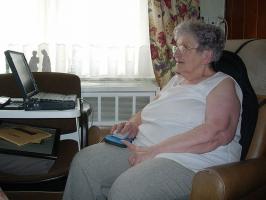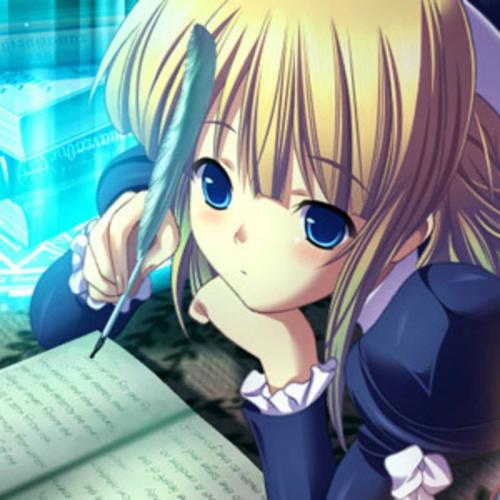Copy Link
Add to Bookmark
Report
Imprint No 07

I M P R I N T
The Newsletter of Digital Typography
Vol. 1, No. 7 Aug. 4, 1997
Contents copyright (c) 1997 by Robert A. Kiesling
and the contributors of IMPRINT.
All rights reserved.
To subscribe, send news, or comment, email to:
imprint@macline.com
In this issue:
Generating digital halftones with PostScript Level II.
Ghostview 1.4 for CMacTeX adds Macintosh printed output.
Use the LaTeX Catalogue to search for LaTeX libraries. .
Frontier scripting language for Macintosh is now freeware.
. . . . . . . . . . . . . . . . . . . . . . . . . . . . . . . . . . .
From the editor: IMPRINT has two new archive sites.
Over the last several weeks, we've added two Web-accessible archive
sites. The IMPRINT TeSRE Archive is the work of Mauro Orlandini and
is accessible at
http://www.tesre.bo.cnr.it/Services/Local/IMPRINT/
Only yesterday was I able to tune into the TeSRE archive to view
Mauro's work. His Web page is a terrific complement to IMPRINT's
plain-text content. Although Mauro says that the purpose of the site
is to reduce Network load, I would encourage anyone who is interested
in Web page design to at least stop in for a view of his handiwork.
Also, IMPRINT is available via my own "home page". At the moment,
this is simply a WWW subdirectory which holds publicly accessible
files. As soon as possible, I'll write the HTML code for it. In the
meantime, you can find IMPRINT back issues and related files, at:
http://www.terracom.net/~kiesling
In the meantime, you'll notice that this IMPRINT is shorter than
usual. Part of that is due to the fact that I'm working under strict
deadlines on other projects, and part is due to the time spent working
on the digiscreen utility, below. So there are plenty of things still
on the back burner for next time, and the newsletter should be closer
to its normal size.
Robert Kiesling
Editor, IMPRINT
. . . . . . . . . . . . . . . . . . . . . . . . . . . . . . . . . . .
Generating digital halftones with PostScript Level II.
PostScript Level II makes it possible, and even easy, to superimpose a
dot pattern over an image. Users can specify the resolution, skew,
and dot pattern to be superimposed. The dot patterns are configurable
for individual CMYK colors and gray tones. The patterns can be used
for dithering, color separations, and, for the simplest cases, for
producing halftone dot screens.
The program digiscreen, presented here, is a bash(1) shell script that
combines a small PostScript language hack and public-domain UNIX
software to generate camera-ready, black-and-white halftones, which
can be used for offset reproduction.
digiscreen is available by pointing your Web browser at
http://www.terracom.net/~kiesling and downloading the file
digiscreen.tar.gz. If you don't have a Web browser, the program and
library files (without the graphics demos) are available via e-mail
from imprint@macline.com. Send a message requesting the files, and
I'll send them to you via e-mail.
digiscreen is implemented with Linux, but us is generic enough that it
should work under any UNIX-type OS. The techniques presented here
should also work under MS-DOS, if you don't mind writing batch files
to process the commands.
The difficulty involved in generating halftones lies in the fact that
the process is highly device-dependent. digiscreen includes
PostScript procedures for 200-, 300- and 600-dpi dot patterns, which
translate approximately to 40-, 60-, and 85-line screens.
The PostScript code for screen40.ps, which sets a 200-dpi dot pattern,
is simply
/localscreenres % stk: res ==> --
{ .sethighresscreen } def
200 localscreenres
Normally, when Ghostscript starts, the PostScript initialization code
in gs_init.ps initializes .sethighresscreen to the resolution of the
default output device. Called from the command line, however,
screen200.ps sets a screen resolution independent of the printer's
resolution, by calling .sethighrescreen with the resolution factor that
we want to use. The files screen60.ps and screen85.ps are similar to
screen40.ps. They differ only in the resolution they specify for
those screens.
Devices of 300 dpi have sufficient output resolution to generate
usable halftones. They won't replace the very high-resolution
halftones used for glossy reproductions, though. If you try to
generate a halftone screen with a higher resolution than your
printer's resolution, Ghostscript will calmly magnify the image so the
printer can print all of the dots, no matter what you have specified
for the output page size.
This is acceptable because, in practical terms, there isn't much point
in trying to generate images of higher resolution than your printer is
capable of printing. A 60-line screen is about the upper limit of
resolution for printing on bond paper anyway, and screens of about 40
lines are standard for newsprint reproduction.
It isn't necessary to perform any graphics manipulations on the image
source files, other than to convert them to PostScript Level II.
ImageMagick's convert(1) utility does the job admirably. The best
output seems to come from JPEG or PostScript source images. Formats
like GIF and TIFF simply may not have the necessary resolution to
produce good halftones.
digiscreen uses the following UNIX packages:
GhostScript Version 5.01
ImageMagick Version 3.8.8
Both packages are reviewed in IMPRINT Vol. 1, No. 6. ImageMagick,
under Linux, also requires libIMPlugIn graphics library. In addition,
Ghostscript requires its PostScript Level II and font libraries. The
URLs for the relevant Linux packages are:
ftp://ftp.cs.wisc.edu/ghost/aladdin/ghostscript-5.01.tar.gz
ftp://ftp.cs.wisc.edu/ghost/aladdin/ghostscript-5.01jpeg.tar.
ftp://ftp.cs.wisc.edu/ghost/aladdin/ghostscript-5.01libpng.ta
ftp://ftp.cs.wisc.edu/ghost/aladdin/ghostscript-5.01zlib.tar.
ftp://ftp.cs.wisc.edu/ghost/aladdin/ghostscript-fonts-std-5.01.tar.gz
ftp://ftp.cs.wisc.edu/ghost/aladdin/ghostscript-fonts-other-5.01.tar.gz
To compile GhostScript 5.01 from source, you need the extra libraries
for Ghostscript's output drivers. However, using a pre-built binary
should work equally well, provided that your run-time library
configuration is standard. The ImageMagick packages are available at:
ftp://sunsite.unc.edu/pub/Linux/apps/graphics/viewrs/
X/ImageMagick-3.8.8-ELF.tgz
ftp://sunsite.unc.edu/pub/Linux/libs/graphics/libIMPlugIn-1.2-elf.tgz
You should install digiscreen.sh on your executable path, in
/usr/local/bin, for example. The default location for the
screenXX.ps files is /usr/local/lib, but you can edit their default
directory in digiscreen.sh.
It does bear repeating that the combination of digiscreen and a
300-dpi inkjet printer is no substitute for a production camera and
ImageSetter, but this system can prove economical in both time and
materials saved for medium-grade offset reproduction. It also can
prove to be a lifesaver for the all-too-familiar situations where the
production camera decides to go south on vacation an hour before
deadline.
You can evaluate digiscreen's results on your own printer. The
digiscreen/demos subdirectory contains images which have a wide
variety of tonal values and image quality. They're PostScript Level
II and can be printed via Ghostscript, or directly with a PostScript
printer:
linus.jpg
linus.40-line.ps
linus.60-line.ps
iwantyou.gif
iwantyou.40-line.ps
iwantyou.60-line.ps
parrots.40-line.ps
parrots.60-line.ps
starrynight.40-line.ps
starrynight.60-line.ps
linus.40-line.ps and linus.60-line.ps are head shots of Linux creator,
Linus Torvalds and is screened with 40-line and 60-line screens,
respectively. The JPEG original is courtesy of Linux Gazette. The
original iwantyou.gif is also courtesy of the Linux Gazette.
parrots.40-line.ps and parrots.60-line.ps are generated from the
parrots.jpeg demonstration file which is included with JPEGView.
starrynight40-line.ps and starrynight.60-line.ps are reproduced from a
JPEG image of the Vincent Van Gogh painting, "Starry Night."
Generating the halftones turned out not to be especially
memory-intensive, as graphics operations go: creating the half-page,
screened, "Starry Night" image required only about 10MB of memory.
But the process is moderately processor-intensive. It took my '386
server, which has kernel math emulation, 20 - 30 minutes to generate
each screened image.
. . . . . . . . . . . . . . . . . . . . . . . . . . . . . . . . . . .
Ghostview 1.4 for CMacTeX adds Macintosh printed output.
Tom Kiffe, tkiffe@math.tamu.edu, the author of CMacTeX, has updated
the package's Ghostview PostScript viewer to version 1.4. The
program, which is based on Aladdin Ghostscript 4.03, now produces
printed output as well as allowing PostScript documents to be viewed
on-screen.
The program is shareware. Contact the author for pricing and site
licensing of Ghostview and the CMacTeX package.
The program is similar to previous Ghostview browsers. Installation
should follow a familiar pattern for anyone who's installed
CMacTeX before.
You'll need the following archives from the CMacTeX home page,
http://www.math.tamu.edu/~tkiffe/cmactex.html:
ghostview.hqx
gs403files.hqx
gs403fonts.hqx
The latter two archives are available from any Ghostscript archive.
Ghostview uses the CMacTeX configuration utility to set the correct
font and PostScript library paths.
. . . . . . . . . . . . . . . . . . . . . . . . . . . . . . . . . . .
Use the LaTeX Catalogue to search for LaTeX libraries. .
If you have teTeX, you already have the LaTeX Catalogue, by Graham
Williams, a one-stop shopping guide of available LaTeX library code,
where you can locate routines and packages for just about anything
that can be done with LaTeX. The Catalogue saves you from re-inventing
the wheel, because the chances are that somebody has already written
code for the task that's confronting you now.
If you don't have teTeX, the most recent edition of the catalog is
available on-line.
If you need font encodings for Italian, or a subroutine that indents
the first paragraph after a section heading, you'll find them here.
The Catalogue is actually a large BibTeX database of CTAN pathspecs
and one-line descriptions. If you're wondering how to implement your
own database on the Web, you could do worse than to look at Williams'
example to see how its done.
The Catalogue is located in your teTeX distribution under
texmf/doc/Catalogue/.
The catalog is available on-line, on CTAN at:
CTAN:help/Catalogue/catalogue.html
The Home Edition is located at
http://www.cbr.dit.csiro.au/~gjw/
. . . . . . . . . . . . . . . . . . . . . . . . . . . . . . . . . . .
Frontier scripting language for Macintosh is now freeware.
Frontier, the popular commercial scripting language for Macintosh
by Userland Software, is now avaiable as freeware.
Billed as a Web developer's tool, Frontier is actually a fully
featured scripting language and development environment. It has the
high-level GUI features of Hypertalk and the system-level facilities
of Perl. Frontier also works with helper applications like BBedit and
NetScape, and other languages like AppleScript and Perl.
The user interface has the workspace-and-browser feel of Smalltalk,
although Frontier lacks the inheritance features of a true
object-oriented programming language.
Sample applications include a to-do list, text editor, text search,
and a GUI documentation client/server suite. There is no licensing
fee for distributing Frontier-based scripts and applications.
Frontier is available from the Userland web site:
http://www.scripting.com
. . . . . . . . . . . . . . . . . . . . . . . . . . . . . . . . . . .
To SUBSCRIBE or UNSUBSCRIBE to IMPRINT, send a brief, human-
readable message to imprint@macline.com.
Back issues of IMPRINT are available via anonymous FTP from the
Etext Archives:
ftp://ftp.etext.org/pub/Zines/IMPRINT/
via the World Wide Web:
http://www.etext.org/pub/Zines/IMPRINT/
http://www.tesre.bo.cnr.it/Services/Local/IMPRINT/
http://www.terracom.net/~kiesling
and can be requested via e-mail from:
imprint@macline.com
IMPRINT: The Newsletter of Digital Typography, ISSN 1094-8090,
Madison, Wi., is copyright (c) 1997 by Robert A. Kiesling and its
individual contributors. IMPRINT may be reproduced in its entirety
for distribution by electronic media, provided that no fee is
charged for the newsletter. Individual stories are copyrighted by
their authors. Registered trademarks are the property of their
respective holders.
. . . . . . . . . . . . . . . . . . . . . . . . . . . . . . . . . . .















